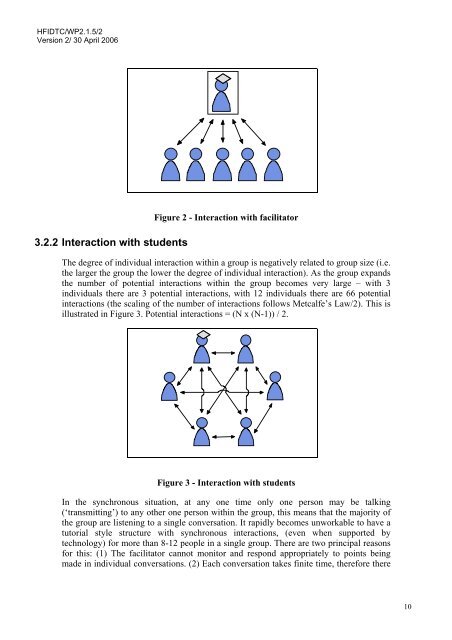E-learning Instructional Design Guidelines - Human Factors ...
E-learning Instructional Design Guidelines - Human Factors ...
E-learning Instructional Design Guidelines - Human Factors ...
You also want an ePaper? Increase the reach of your titles
YUMPU automatically turns print PDFs into web optimized ePapers that Google loves.
HFIDTC/WP2.1.5/2<br />
Version 2/ 30 April 2006<br />
3.2.2 Interaction with students<br />
Figure 2 - Interaction with facilitator<br />
The degree of individual interaction within a group is negatively related to group size (i.e.<br />
the larger the group the lower the degree of individual interaction). As the group expands<br />
the number of potential interactions within the group becomes very large – with 3<br />
individuals there are 3 potential interactions, with 12 individuals there are 66 potential<br />
interactions (the scaling of the number of interactions follows Metcalfe’s Law/2). This is<br />
illustrated in Figure 3. Potential interactions = (N x (N-1)) / 2.<br />
Figure 3 - Interaction with students<br />
In the synchronous situation, at any one time only one person may be talking<br />
(‘transmitting’) to any other one person within the group, this means that the majority of<br />
the group are listening to a single conversation. It rapidly becomes unworkable to have a<br />
tutorial style structure with synchronous interactions, (even when supported by<br />
technology) for more than 8-12 people in a single group. There are two principal reasons<br />
for this: (1) The facilitator cannot monitor and respond appropriately to points being<br />
made in individual conversations. (2) Each conversation takes finite time, therefore there<br />
10
















